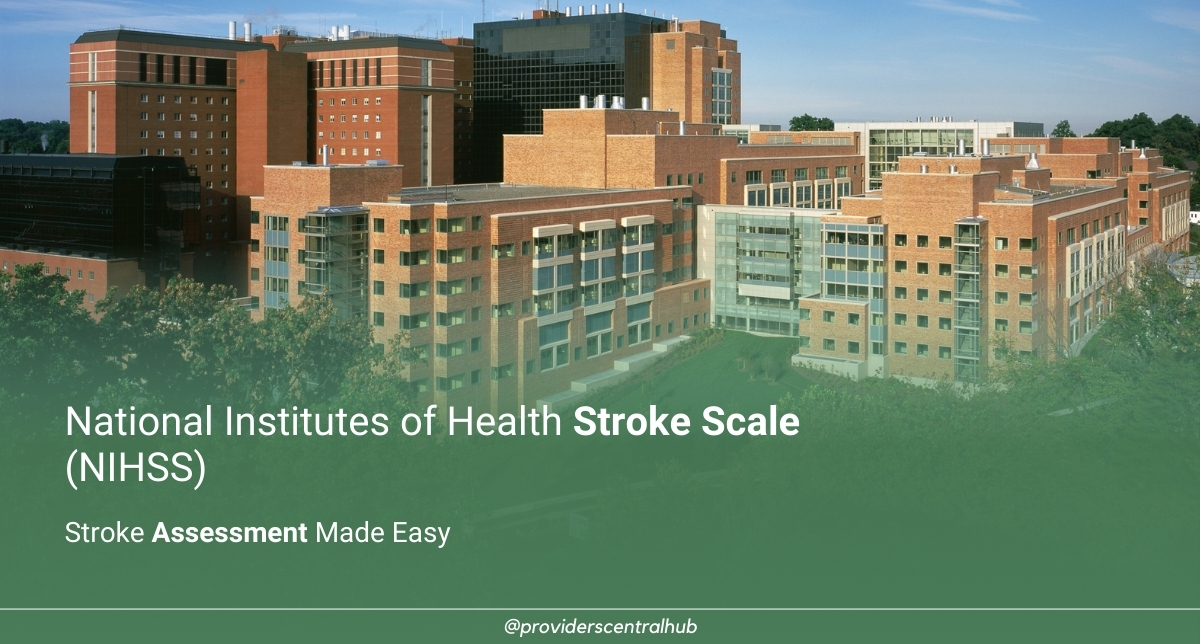Introduction
It is an important tool used in clinical setups to assess the harshness of neurological deficits in patients facing a stroke. The NIHSS developed in 1983, has been established from a research instrument to a standard part of acute stroke management, enabling healthcare providers to communicate efficiently about a patient’s condition and help with treatment decisions [1, 2].
NIHSS Structure
It includes 15 items that evaluate various aspects of neurological function,
- Level of consciousness
- Facial muscle activity
- Sensory function
- Coordination (ataxia)
- Limb strength
- Language production and comprehension (aphasia)
- Speech clarity (dysarthria)
- Visual fields
- Neglect
Every item is scored on a scale, of typically ranges from 0 (normal) to higher values indicating increased severity, with the total ranging from 0 to 42. Aiding in the stratification of stroke severity and prognosis, a higher score signifies greater neurological impairment [3, 4].
Importance of the NIHSS
Clinical Utility
The NIHSS serves multiple purposes in clinical practice:
- Assessment of Stroke Severity: It provides a standardized method for evaluating the extent of neurological damage, which is crucial for determining treatment options such as thrombolysis.
- Monitoring Progress: The scale allows for ongoing evaluation of a patient’s condition, helping clinicians track recovery or deterioration over time.
- Predictive Value: Research indicates that NIHSS scores can predict patient outcomes, including rehabilitation needs and potential for discharge to home versus long-term care facilities [5].
Reliability and Validity
The NIHSS has demonstrated good inter-rater reliability, meaning that different trained observers tend to score patients similarly. This consistency is vital for ensuring accurate assessments across various healthcare settings. However, proper training is essential; studies show that inter-rater reliability improves significantly with adequate training.
Practical Application of the NIHSS
Administration
The NIHSS can be administered by trained healthcare providers—physicians, nurses, or therapists—typically within 10–15 minutes. Training programs are available online and include instructional videos to facilitate certification.
Scoring Interpretation
NIHSS scores are interpreted as follows:
- 0–5: Mild impairment; most patients may be discharged home.
- 6–13: Moderate impairment; likely requires inpatient rehabilitation.
- 14 and above Severe impairment; often necessitates long-term care.
Limitations
While the NIHSS is a valuable tool, it has limitations. For example, it may not adequately capture deficits associated with posterior circulation strokes or subtle neurological impairments. Additionally, factors such as language barriers or pre-existing conditions can affect scoring accuracy.
Conclusion
The National Institutes of Health Stroke Scale (NIHSS) is an essential component in the assessment and management of stroke patients. Its structured approach allows for effective communication among healthcare providers and helps guide treatment decisions based on objective measures of neurological function. As stroke care continues to evolve, the NIHSS remains a cornerstone in ensuring optimal patient outcomes through timely and accurate assessment.
References
1. Siniscalchi, A.J.T.J.o.E.M., Use of stroke scales in clinical practice: Current concepts. 2022. 22(3): p. 119-124.
2. Kwah, L.K. and J.J.J.o.p. Diong, National institutes of health stroke scale (NIHSS). 2014.
3. Chen, N., Training Considerations and Implementation of Robotic Assessments of Upper Limb Function in A Nonhuman Primate Model of Chronic Stroke. 2021, Queen’s University (Canada).
4. Ansari, A.J., et al., Acute ischemic stroke: diagnosis and management approach. 2020. 10: p. 25-46.
5. Lyden, P.J.S., Using the national institutes of health stroke scale: a cautionary tale. 2017. 48(2): p. 513-519.




